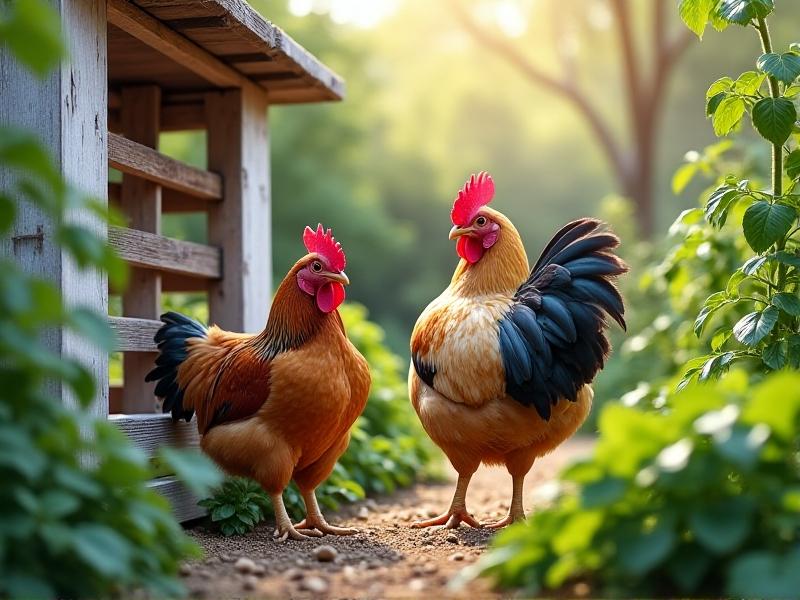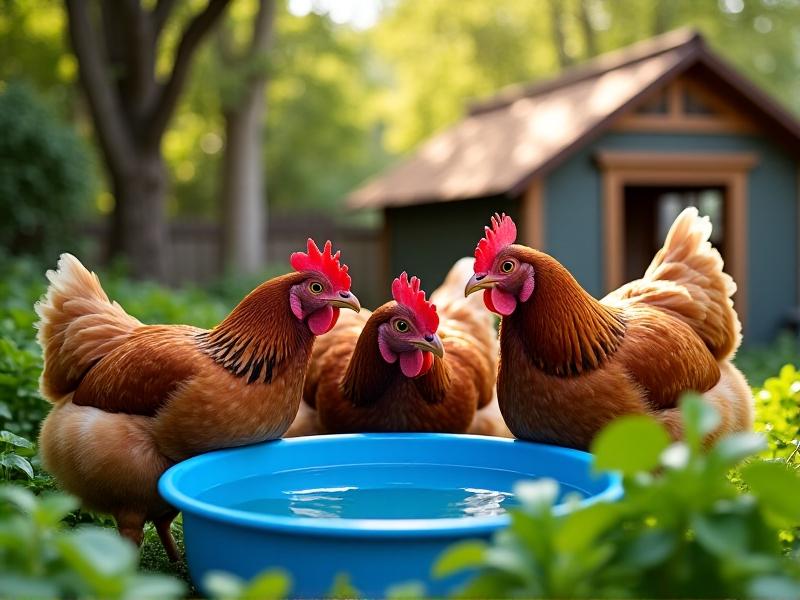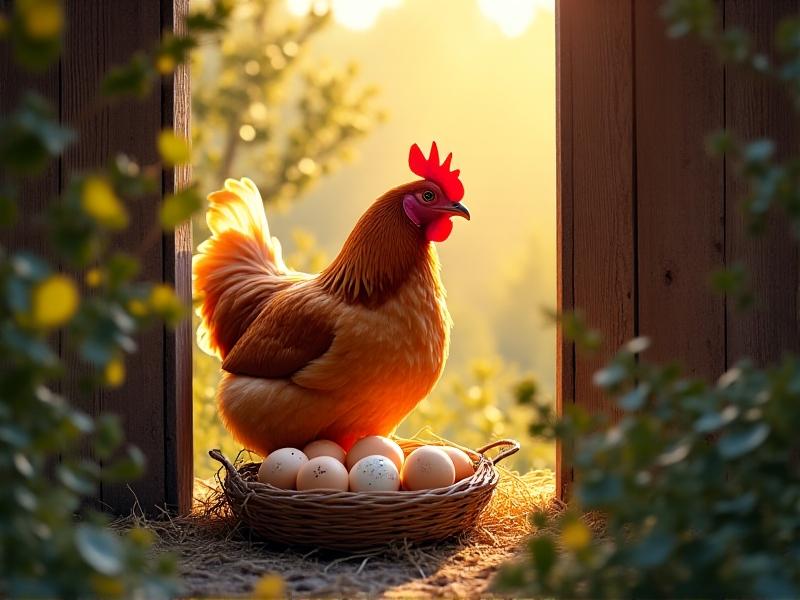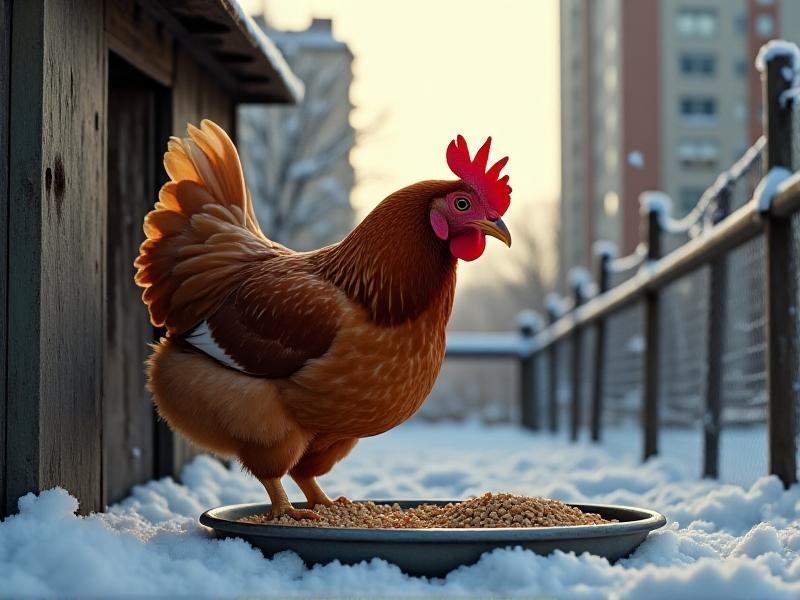The Urban Chicken Revolution: First Steps to Feathered Friends
The Rise of Backyard Chickens: Why Cities Are Clucking About Poultry
In recent years, a quiet revolution has taken root in backyards and rooftops across urban landscapes: the rise of chicken-keeping. No longer confined to rural farms, chickens are becoming feathered fixtures in cities, offering fresh eggs, natural pest control, and unexpected companionship. Urbanites are discovering that these birds require less space than imagined while providing tangible connections to sustainable living. This movement isn’t just about agriculture—it’s a lifestyle shift blending self-sufficiency with community engagement. From Brooklyn to Berlin, chicken coops are popping up as symbols of eco-conscious living, challenging stereotypes about what’s possible in concrete jungles.

Navigating Legal Cluck-Ups: Zoning Laws and Permits
Before building a coop, aspiring urban chicken keepers must tackle bureaucratic hurdles. Municipal regulations vary wildly—some cities allow six hens but ban roosters, while others require permits or neighbor consent. Research local ordinances on flock size, coop placement, and noise restrictions. For example, Seattle permits up to eight chickens on residential lots, whereas Honolulu requires a 100-foot buffer from neighboring homes. Homeowners’ associations add another layer of complexity, often imposing stricter rules. Pro tip: Attend city council meetings to advocate for poultry-friendly policies. Transparency with neighbors is key; share fresh eggs and address concerns about noise or odor preemptively.

Feathered Personalities: Choosing the Right Breed
Not all chickens thrive in urban settings. Prioritize breeds known for calm temperaments and moderate noise levels. Silkies, with their fluffy plumage and docile nature, excel in small spaces but lay fewer eggs. For consistent egg production, consider Australorps or Orpingtons—robust birds that handle confinement well. Avoid loud breeds like Leghorns unless you enjoy predawn wake-up calls. Climate matters too: Cold-hardy Chanteclers survive snowy winters, while naked-neck Transylvanians tolerate heat. Visit local hatcheries to observe behavior firsthand—look for curious but not skittish birds. Many urban keepers start with pullets (young hens) to skip the chick-rearing phase, though raising chicks fosters deeper bonds.

Coop Dreams: Designing a Safe and Stylish Home
A well-designed coop balances function and aesthetics. Allow 4 square feet per bird indoors and 10 square feet in the run. Elevate the structure to prevent flooding and deter predators—raccoons can open basic latches, so install locking mechanisms. Ventilation is critical; install hardware cloth-covered windows near the roof peak to reduce ammonia buildup. For urban appeal, try a modern coop with cedar siding and a green roof planted with sedum. Inside, include nesting boxes lined with straw and roosting bars angled slightly downward to keep hens clean. Creative upcycling ideas abound: convert an old playhouse into a coop or use repurposed shutters for ventilation panels.

From Scratch to Snack: Daily Care and Feeding
Chickens thrive on routine. Provide constant access to fresh water—heated bowls prevent winter freezing. Feed layers pellets for balanced nutrition, supplemented with kitchen scraps like carrot tops and oatmeal. Avoid avocado skins and raw potatoes, which are toxic. Scatter scratch grains in the run to encourage natural foraging behavior. Collect eggs daily to discourage broodiness, and clean coops weekly using the deep litter method (adding carbon-rich bedding to decompose waste). Observe your flock during evening feedings—this quiet time helps spot health issues early. In freeze-prone areas, apply petroleum jelly to combs to prevent frostbite. Remember: Happy chickens lay better eggs!
Health Check: Preventing and Treating Common Issues
Urban chickens face unique health risks. Respiratory infections spread quickly in damp coops, so maintain low humidity with proper ventilation. Mites and lice lurk in bedding—dust baths with diatomaceous earth help control parasites. Watch for lethargy, ragged feathers, or reduced egg production as warning signs. Establish a relationship with a poultry-savvy vet; many now offer mobile services for urban flocks. Keep a first-aid kit stocked with vet wrap, antiseptic spray, and electrolyte supplements. Quarantine new birds for 30 days to prevent disease introduction. For stressed city hens, try hanging a cabbage piñata—pecking releases anxiety. Prevention beats cure: Biosecurity measures like footbaths at coop entries minimize contamination risks.
Eggstra Benefits: Beyond Breakfast
Chickens offer surprising perks beyond omelets. Their manure, when composted, becomes garden gold—rich in nitrogen and phosphorus. Let hens free-range (supervised) to devour slugs and weed seeds, reducing lawn pests naturally. Teach kids responsibility through feeding chores or tracking egg counts. Some therapy programs use chickens to ease anxiety; their gentle clucking has a calming effect. Creative keepers use molted feathers for crafts or quill pens. Neighborhood egg stands foster connections—trade a dozen eggs for a neighbor’s honey or homemade jam. Urban flocks even inspire art: Instagram accounts dedicated to fashionable coops and chicken portraits have amassed cult followings.
Clucking Community: Building Connections Through Chickens
Urban chicken keepers are forming tight-knit networks, both online and offline. Facebook groups like “City Hens United” swap tips on predator-proofing and diagnose odd chicken behaviors. Local poultry swaps allow urban farmers to trade excess chicks or rare breeds. Annual events like Portland’s Tour de Coops invite the public to admire creative setups while educating newcomers. Some communities organize egg carton recycling drives or donate surplus eggs to food banks. Challenges persist—noise complaints, occasional escapes—but the rewards outweigh hiccups. As one Brooklyn keeper notes, 'My hens turned strangers into friends. We now share not just eggs, but recipes and babysitting too.'








